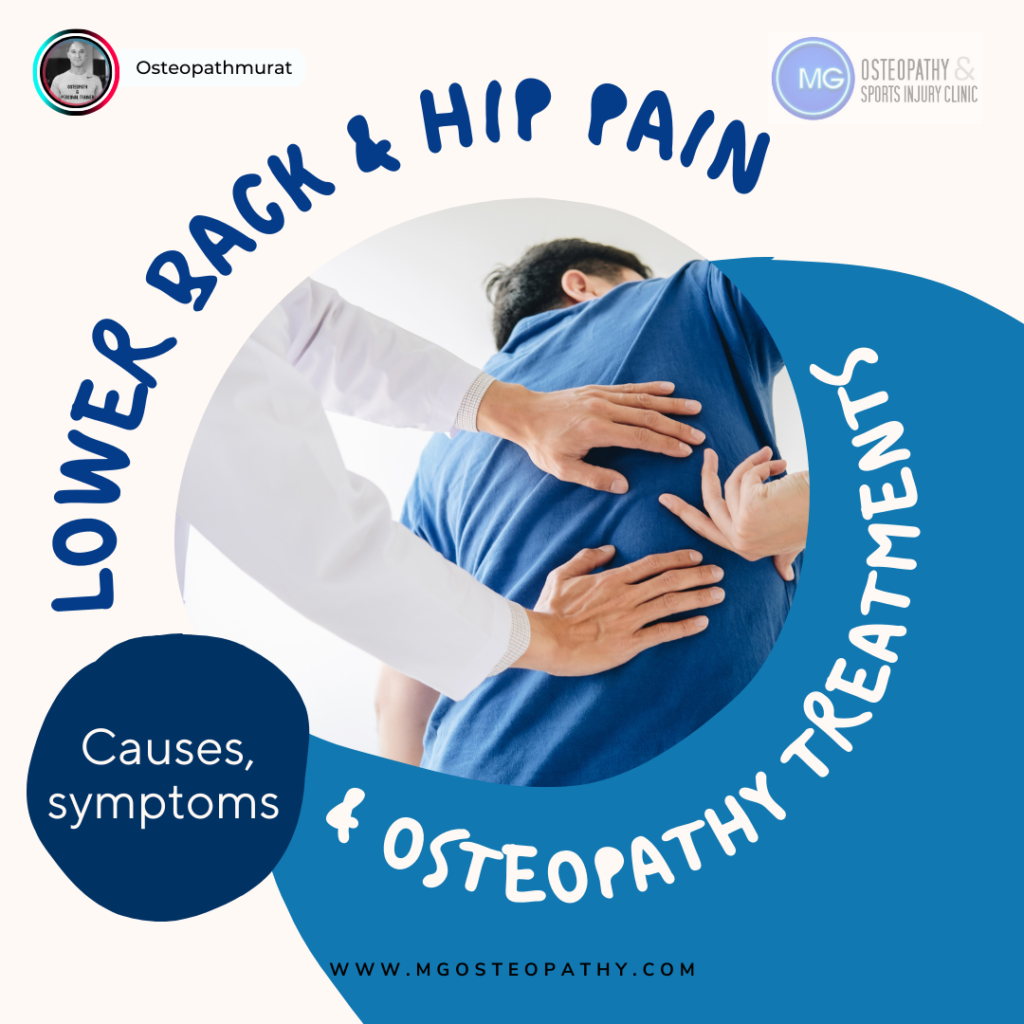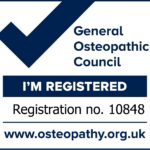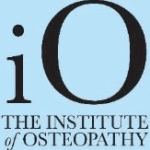Lower back and hip pain are prevalent issues that can disrupt daily activities and overall quality of life. These pains can be attributed to various musculoskeletal (MSK) and systemic conditions, each requiring a distinct approach for accurate diagnosis and effective treatment. In this blog, we’ll explore the common causes of lower back and hip pain, review essential differential diagnoses and discuss how MG Osteopathy East London can support your journey to recovery.
Common Causes of Lower Back and Hip Pain
1. Gluteal Tendinopathy Gluteal tendinopathy is an overuse injury affecting the tendons connecting the gluteal muscles to the pelvis and femur. This condition is prevalent among runners and those who engage in repetitive lower limb activities. It often causes pain on the outer side of the hip, especially when lying on the affected side or during activities such as climbing stairs. Treatment typically includes rest, strengthening exercises, and manual therapy.
2. Bursitis Bursitis is the inflammation of the bursae-small fluid-filled sacs that cushion the bones, tendons, and muscles near the joints. Trochanteric bursitis, in particular, affects the hip and leads to pain on the outer side of the hip and thigh. This condition is usually due to repetitive movements, prolonged pressure, or acute injury. Management involves reducing inflammation, improving mobility, and addressing any underlying biomechanical issues.
3. Ligament Sprain A ligament sprain occurs when the ligaments supporting the lower back or hip are overstretched or torn. This often results from sudden twists or impacts, leading to localized pain, swelling, and instability in the affected area. Rehabilitation for ligament sprains generally includes rest, manual therapy, and a structured return-to-activity plan.
4. Lumbar Radiculopathy (Sciatica) Lumbar radiculopathy, commonly known as sciatica, is caused by compression or irritation of a spinal nerve in the lower back. This condition results in pain that radiates down the leg and can be associated with symptoms such as numbness, tingling, or weakness. Common causes include herniated discs, spinal stenosis, or degenerative disc disease.
5. Piriformis Syndrome Piriformis syndrome involves compression of the sciatic nerve by the piriformis muscle in the buttock. This can result in pain, tingling, or numbness in the buttock and down the leg, mimicking sciatic nerve pain.
Systemic Causes of Lower Back and Hip Pain
1. Ankylosing Spondylitis Ankylosing spondylitis is a chronic inflammatory disease primarily affecting the spine and sacroiliac joints.
2. Rheumatoid Arthritis Rheumatoid arthritis is an autoimmune condition that causes inflammation in the joints, including those in the hips and spine.
3. Infections Spinal infections such as osteomyelitis or discitis can result in severe back pain, often accompanied by fever and systemic symptoms.
4. Hip Osteoarthritis involves the degeneration of cartilage in the hip joint, leading to pain and stiffness, particularly with movement. It is a common condition in older adults and can significantly impact daily activities.
5. Metastatic Cancer Metastatic cancer, where cancer spreads to the bones from other parts of the body (such as the breast, prostate, or lung), can cause significant pain in the lower back and hips.
6. Avascular Necrosis Avascular necrosis refers to the death of bone tissue due to a lack of blood supply. This condition commonly affects the femoral head in the hip, leading to pain and potential joint collapse.
Pain Management Protocols at MG Osteopathy East London
At MG Osteopathy East London, we offer a variety of treatments tailored to effectively address both musculoskeletal and systemic causes of lower back and hip pain. Our comprehensive approach includes:
- Osteopathy: Manual techniques to enhance joint mobility, relieve muscle tension, and improve circulation, especially effective for treating conditions like gluteal tendinopathy and bursitis.
- Shockwave Therapy: A non-invasive method using acoustic waves to stimulate healing in damaged tissues. Ideal for chronic conditions such as tendinopathy and persistent bursitis.
- Massage Therapy: Therapeutic massage to reduce muscle tension, improve blood flow, and promote relaxation. It complements other treatments for managing pain and enhancing recovery.
- Dry Needling: This technique targets trigger points in muscles to alleviate deep-seated pain and tension, useful for chronic conditions like tendinopathy.
- Hybrid Sessions: Combining multiple treatment modalities in one session, providing a holistic approach to pain management and rehabilitation for more complex cases.
Conclusion
Lower back and hip pain can result from a wide range of musculoskeletal and systemic conditions. Accurate diagnosis is essential for effective treatment and recovery. At MG Osteopathy East London, our team provides tailored care using a combination of Osteopathy, Shockwave therapy, Massage, Dry needling, and Hybrid sessions to address your specific needs.
If you experience persistent pain or notice any clinical red flags, don’t hesitate to contact us. Early intervention can significantly impact your recovery and quality of life. Let us assist you in taking the first step toward a pain-free existence.
Don’t forget to read our previous blog on preventing lower back pain backed by Dr Andrew Huberman’s latest protocols
Follow our instagram/tiktok @osteopathmurat or youtube @MG Osteopathy & Sport’s Injury Clinic to learn more about Osteopathy with free rehabilitation & strengthening videos.
Book with Jula




